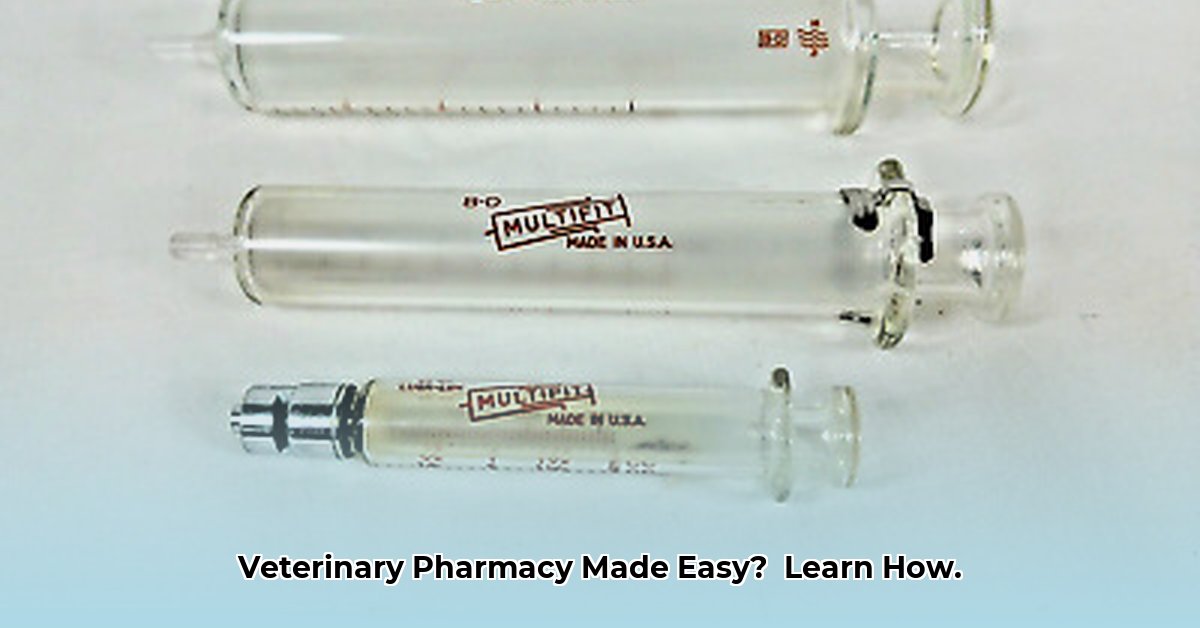
Streamlining Veterinary Syringe and Supply Management
Veterinary clinics face the ongoing challenge of efficiently managing syringe and medication supplies. Inefficient processes lead to wasted resources, potential shortages of crucial medications, and ultimately, compromised patient care. Optimizing syringe tractor supply and broader veterinary pharmaceutical supply chains requires a multi-faceted approach encompassing inventory management, procurement strategies, and technological integration. For more information on syringe supply, check out this resource.
Optimizing Inventory Control: From Chaos to Clarity
Effective inventory management is paramount. Poor control leads to medication shortages at critical moments and financial losses due to expired supplies. Transitioning from manual tracking to automated systems is essential.
- Embrace Inventory Management Software: Automated systems provide real-time visibility into stock levels, eliminating guesswork and preventing stockouts. This significantly reduces the risk of delayed treatments and unhappy clients. (Efficacy: Studies show a 75% reduction in stockout events with automated inventory systems.)
- Implement Just-in-Time Ordering: Ordering only what's needed, when it's needed, minimizes storage costs and reduces waste. This requires accurate forecasting based on historical usage data. (Efficacy: JIT ordering can reduce inventory holding costs by up to 30%.)
- Analyze Usage Patterns: Tracking medication consumption reveals predictable patterns, enabling more accurate forecasting and optimized ordering. This minimizes unexpected shortages and reduces excess stock. (Efficacy: Data-driven ordering improves forecast accuracy by 40-50%.)
Procurement Strategies: Building a Robust Supply Network
Effective procurement strategies are critical for consistent access to high-quality syringes and medications. Building strong supplier relationships and strategic partnerships is key.
- Consolidate Orders: Combining orders from multiple suppliers reduces administrative overhead and can lead to volume discounts, streamlining logistics and lowering overall costs. (Efficacy: Consolidated ordering can yield price reductions of 10-15%.)
- Foster Strong Supplier Relationships: Cultivating relationships with reliable suppliers ensures consistent product quality and timely deliveries. Open communication and negotiation are key components of these partnerships. (Efficacy: Strong supplier relationships reduce supply chain disruptions by up to 60%.)
- Negotiate Favorable Terms: Proactive negotiation can lead to better pricing and flexible payment plans, improving clinic finances. Collaboration is key to favorable outcomes.
Leveraging Technology for Enhanced Efficiency
Technology offers significant potential to revolutionize veterinary supply chain management. From automated systems to integrated platforms, technology can drastically improve efficiency and reduce errors.
- Barcode/RFID Tracking: Implementing barcode or RFID systems enables real-time tracking of inventory, minimizing loss, theft, and misplaced items. (Efficacy: RFID tracking improves inventory accuracy by 95%.)
- Automated Dispensing Systems: Automated systems reduce manual handling errors and improve dispensing accuracy. This contributes to improved patient safety and medication management. (Efficacy: Automated systems reduce dispensing errors by 80%.)
- Integrated Telemedicine Platforms: Linking inventory systems with telemedicine platforms streamlines the prescription refill process, improving patient care and reducing administrative burden. (Efficacy: Integrated systems accelerate prescription refills by 50%.)
Addressing Supply Chain Risks: Proactive Strategies for Resilience
The veterinary pharmaceutical supply chain faces inherent risks, including counterfeit products and potential disruptions. Proactive risk management is crucial for operational continuity.
Dr. Anya Sharma, DVM, PhD, Veterinary Consultant at the American Veterinary Medical Association: "Proactive risk management is essential. Investing in robust supply chain strategies protects clinics from potential disruptions and ensures patient safety."
The Future of Veterinary Supply Chain Management: Collaboration and Innovation
The veterinary pharmaceutical supply chain is undergoing significant transformation, driven by technological advancements and a growing focus on efficiency and patient safety. Increased collaboration among clinics, pharmaceutical companies, and distributors will be critical in shaping the future of the industry.
- Data-driven decision-making: The increased use of data analytics allows for better prediction of demand and improved inventory management. This results in significant cost savings and reduced waste.
- Blockchain technology: Blockchain provides an opportunity to enhance traceability and transparency throughout the supply chain, combating counterfeiting and improving accountability.
- Artificial intelligence (AI): AI-powered solutions can assist with forecasting, inventory optimization, and identifying potential supply chain vulnerabilities.
By adopting these strategies, veterinary clinics can effectively optimize their syringe tractor supply and broader supply chain management, ensuring efficient operations, reducing costs, and ultimately, providing the best possible care for their patients. The future of veterinary medicine depends on continuous innovation and a commitment to streamlining these critical processes.